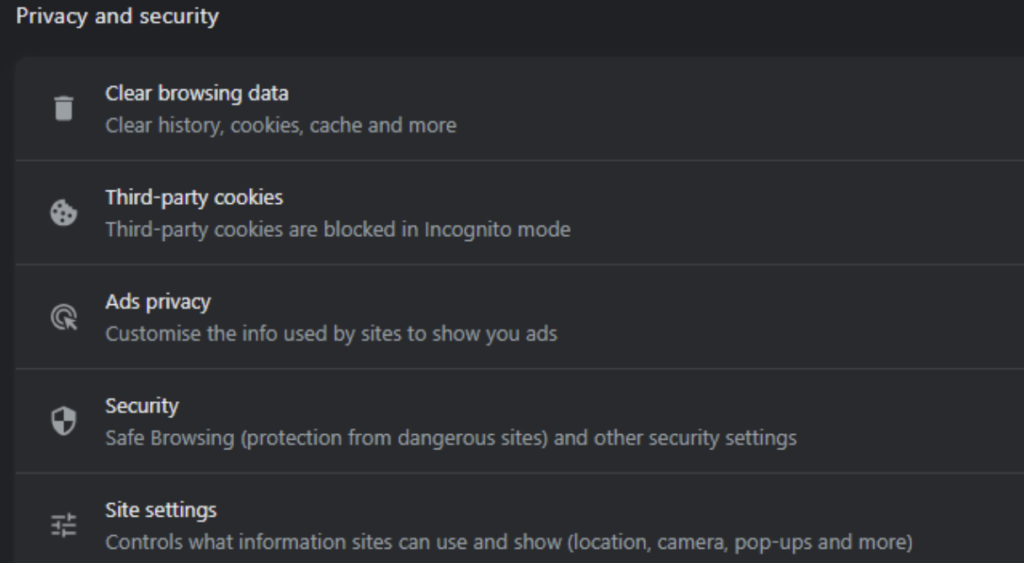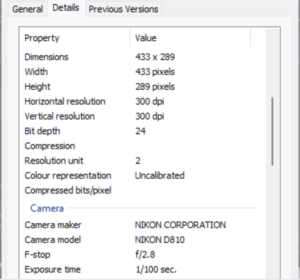What is a Digital Footprint?
Do you know what a digital footprint is? It is the trail of data that you leave behind when you use the internet or digital devices. It can be either active or passive, depending on whether you intentionally share information or not.
Your digital footprint can affect your online reputation, privacy, and security.
Our lives are intertwined with the digital world, where we share many aspects of our personal and professional experiences. As digital citizens, we have a duty to use technology in a responsible and ethical way, without compromising our own or others’ security. A digital footprint is the data trail that we create when we engage in online activities or use the internet. It encompasses our online actions, such as posting or commenting on social media, liking, buying, searching, or visiting websites. In other words, it’s the evidence of our online existence and behavior. Our digital footprint can have lasting consequences for our privacy, security, and reputation. Therefore, we need to be careful about what we disclose online and take measures to manage and protect our digital footprint.
Managing our online privacy is closely related to managing our digital footprint. Online privacy is the ability to safeguard and control our personal information and activities on the internet. It means having the choice to determine what information we share, who can access it, and how it is used. Sharing personal information online can expose us to various risks. These include identity theft, data breaches, online fraud, targeted ads, and privacy violations. Cybercriminals and malicious actors can use personal information for different purposes, such as financial scams, unauthorized account access, and targeted phishing attacks.
Active and passive digital footprints
A digital footprint is the unique set of traceable digital activities, actions, contributions, and communications that you manifest on the internet or digital devices. It can be classified as either active or passive.
An active digital footprint is where you deliberately share information about yourself online. For example, when you post or comment on social media, subscribe to a newsletter, leave a review, or shop online. You have more control over your active digital footprint, as you can choose what to share and with whom.
A passive digital footprint is where information is collected about you without your knowledge or consent. For example, when websites track your browsing behavior, location, and device information using cookies or other technologies. You have less control over your passive digital footprint, as you may not be aware of what is being collected or how it is used.
Why your digital footprint matters
Your digital footprint matters because it can have a significant impact on your online reputation, privacy, and security. Here are some reasons why you should care about your digital footprint:
- Your digital footprint can reveal a lot of personal information about you, such as your interests, preferences, opinions, and activities. This information can be used by different parties for various purposes, such as:
- Employers can check your digital footprint to evaluate your suitability for a job.
- Advertisers can use your digital footprint to target you with personalized ads.
- Cybercriminals can use your digital footprint to steal your identity, hack your accounts, or blackmail you.
- Your digital footprint is relatively permanent, and once the data is public or semi-public, you have little control over how others will use it. For example, your social media posts can be seen by anyone, even if you delete them later. Your online activity can also be archived by search engines or other websites, making it hard to erase.
- Your digital footprint can determine your digital reputation, which is now considered as important as your offline reputation. Also, your digital reputation can affect your personal and professional opportunities, as well as your social relationships. For example, your digital reputation can influence how others perceive you, trust you, or interact with you online.
How to manage and protect your digital footprint
Managing and protecting your digital footprint is important to ensure that you have a positive and safe online presence. Here are some steps that you can take to manage and protect your digital footprint:
- Review your privacy settings on social media and other online platforms. Make sure that you are comfortable with who can see your posts, comments, and profile information. Adjust your settings to limit the access of strangers, third parties, or unwanted contacts.
- Delete or edit any posts or comments that you don’t want to be seen by others. Be careful about what you share online, especially if it is sensitive, controversial, or personal. Think before you post, and avoid posting anything that you may regret later.
- Use strong passwords and antivirus software to secure your devices and accounts. Choose passwords that are long, complex, and unique for each account. Change your passwords regularly, and use a password manager to store them safely. Install antivirus software on your devices, and keep them updated. Scan your devices for malware, and avoid clicking on suspicious links or downloading unknown files.
- Educate yourself and others about the risks and benefits of online activity. Learn how to spot and avoid phishing, spam, or scam emails. Be aware of the common cyber threats and how to prevent them. Teach your friends and family about the importance of managing and protecting their digital footprints.
By managing and protecting your digital footprint, you can have more control over your online identity and how it is perceived by others. You can also reduce the chances of becoming a victim of cyberattacks or online harassment. Managing and protecting your digital footprint is a way of being responsible and respectful online.
Social media posts and impact – Digital Footprint
Your online presence and activities What if someone wanted to find out everything they could about you? The best way to do that would be to look at your online presence. For example, your social media profiles and posts. Perhaps you have a professional networking profile (e.g., LinkedIn). Perhaps you post frequently on various forums or leave reviews on places you’ve visited or eaten at. In the digital age, many of us want to create a positive and flattering digital reputation of ourselves, where the impression of us is based on our online activities and presence.
By putting together a lot of information you voluntarily share about yourself, a picture can be formed. Who you are, what you like and dislike, where you travel for work and fun, your exercise routine, your friends, family, and colleagues, where you live, and much more!
What are you sharing? Think about the information you share about yourself online.
On social media, it could be a post about something amusing you saw on your way to work, maybe a photo of the food you’re about to eat in a fancy restaurant on Instagram, a picture of a family gathering on Facebook with everyone tagged, an appeal for a fundraising charity skydive you’re going to do in a few months.
Now, think about how someone with malicious intentions could use these seemingly harmless bits of information.
The post could reveal which route you take to work.
The photo at the restaurant shows where you are right now.
The family photo gives a ‘family tree’ of connections. Did everyone agree to be tagged?
The appeal for the fundraiser will tell people when you will not be at your home.

Example, in this photo you can identify restaurant, route, city, etc.
Besides what we write and photograph, we willingly share other fascinating information. There are many health apps on our phones where we can track our geolocation and post a route of a run, hike, or cycle we are especially proud of.
Some of us enjoy going for a run or cycle ride in a loop from our home. To track and display our full workout, we are motivated to start and finish the tracking from our doorstep. This is great if we want to ‘earn’ every painful meter! However, when we post the route map along with the stats of our accomplishments, it could reveal where we live, and regular posts could reveal if we always follow the same route at the same time every day. This is a clear concern for our personal safety and home security. Running or cycling from home to work every day also enables your place of work to be identified.
There are numerous apps and sites where we consciously and intentionally share information about ourselves.
However, your digital footprint is much more than what you write on social media or photos you decide to share.
If you’re eager to learn more about the techniques used in investigating people and organizations from information that’s in the public domain, our collection on Open Source Intelligence (OSINT) would be an excellent place to start:
Tracking Technologies – Cookies
Tracking technologies are online tools that gather and analyze user behavior, preferences, and activities. These technologies have a significant impact on your digital footprint and can affect your privacy and security.
One of the most common tracking technologies is cookies. Cookies are small text files that are saved on a user’s device when they visit a website. They can track browsing history, login details, and preferences. While cookies can improve user experience by remembering settings and preferences, they can also be used for targeted advertising and tracking across multiple websites.

Google Chrome cookie settings.
The Google Chrome menu for cookie settings which includes clearing browser data, third-party cookies, ads privacy, and more. Google Chrome offers various cookie settings. Another tracking technology is web beacons, also called pixel tags or clear GIFs. These are tiny, invisible images that are embedded in web pages or emails. When a user loads a page or opens an email that contains a web beacon, it sends information back to the server, allowing the sender to track user engagement, such as email opens or website visits.
Device digital fingerprinting
Device fingerprinting is another method for tracking users. It involves collecting unique identifiers from a user’s device, such as browser type, operating system, screen resolution, and installed plugins.
Often, our phones or laptops add a lot of data to files that we create to fingerprint what device the file was created on. For example, a photo taken on your phone will have a lot of data along with it, known as metadata. Depending on your device’s settings, the metadata could include:
Camera settings such as aperture, resolution, focal length, shutter speed, ISO speed Phone brand and model Date and time when the photo was taken GPS location where it was taken

Metadata information


